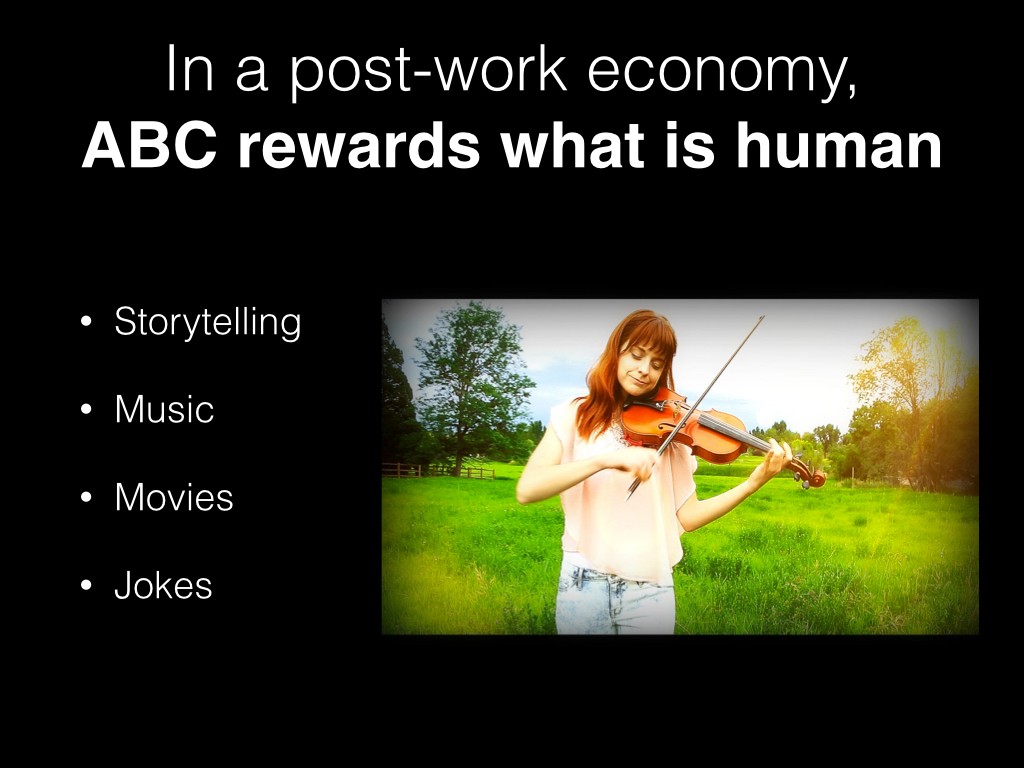On March 9, I was a guest on Joseph Ady’s excellent People of Portland podcast. Listen here.
Author Archives: thematizer
SCALE Talk on Lotus Petal Architecture – March 8, 2020
This is me presenting about how better UX can help musicians, creators, and coders find their audience online and integrate with AI for more powerful, fine-tuned predictive systems.
Talk presented at the SCaLE conference in Los Angeles, CA on Sunday, March 8. Click here for the full abstract and notes.
Listen to My Talk on ROSECODE at LinuxFest
Presentation is now online from my talk about ROSECODE and the Open Franchise for Creators:
The talk was selected as a Program Highlight and presented on April 28 at LinuxFest Northwest 2018 in Bellingham, Washington. Thanks for being a great audience and asking really good questions at 10:45 am on a Sunday morning!
ROSECODE talk
I’m giving a talk on the ROSECODE project tomorrow at Linuxfest NW.
Video should be up shortly thereafter.
Attention Based Currency and Universal Basic Income
Cryptocurrency could be the key to making Universal Basic Income fiscally achievable on a massive scale. Here’s how.
Talk presented on July 8 at the BIEN 2016 Summit in Seoul, South Korea.
Here are the slides from the talk I gave at BIEN 2016 this week at Sogang University, Seoul, South Korea: “UBI + ABC: Envisioning a Post-Work Economy”
Here is the paper published in the journal of BIEN 2016 proceedings, co-authored with Scott Little, Ph.D. Listen to the full talk here.
Abstract: Attention Based Currency and Universal Basic Income
Cryptocurrencies from Ethereum to Bitcoin to UCoin have often been proposed as a decentralized, secure, and efficient way to deliver the benefits of Universal Basic Income (UBI) to a global community. Attention Based Currency (ABC) is a cryptocurrency generated by the interaction of Internet users with streaming media. Listening records are secure and encrypted, but the algorithm rewards listeners who seek out and share new content as “early adopters.” ABC is a market-based approach that can be used independently or in tandem with more traditional government-funded or philanthropic UBI programs.
Our economy is shifting from a model of extraction and industrial production to a post-capitalist system ordered by the weightless transfer of information. ABC’s application of blockchain distributed database technology to the consumption of content represents a new way to quantify this source of wealth in real time and reinvest it to achieve a more vibrant and dynamic global information culture.
Our paper presents analysis of the economic impact generated by two proposed pilot models:
■ ABC only
■ State-funded UBI onlyWe will then present a new hypothesis, ABC launched in partnership with a cryptocurrency-based UBI delivery system, that is driven by the results of this analysis as a viable option.
As jobs disappear and the price of online goods and services approaches zero, neither advertising revenue nor stock market speculation can sustain the global Internet economy indefinitely. ABC protects users’ privacy, while providing direct rewards for their role in the information economy. Attention Based Currency, when deployed in combination with Universal Basic Income, holds the potential to create a sustainable, human-powered, information economy.
ABC Online Demo:



